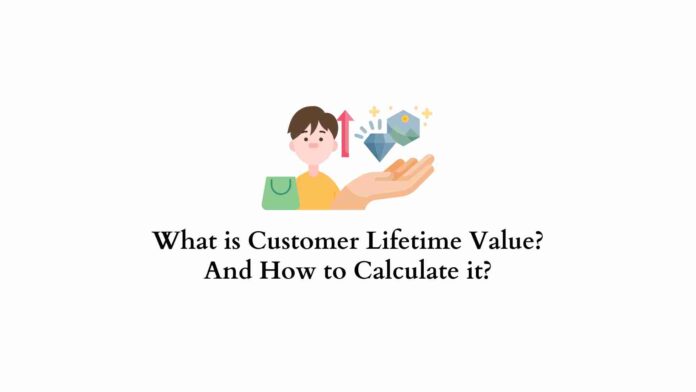Last updated - November 10, 2023
A business organization’s value and revenue are gauged more often by the number of repeat customers than by the number of new customers. While it is exciting to have new customers as it widens the audience base of a particular business organization, they do not contribute much towards recurring income.
For instance, a customer who consistently spends $50 over the course of several years is more important to a corporate organization than one who only once spends $1,000. This is because a repeat customer not only brings consistent income to the organization but also adds value to the loyalty and referral aspects of the organization.
This concept is known as Customer Lifetime Value (CLV) and in this blog, we will provide more insight into CLV and how to calculate it.
What is Customer Lifetime Value?
Customer lifetime value is a metric used to describe how much money a company can expect to make overall from a typical customer during the duration that person or account stays a customer.
It is better to consider both the total average profit and the total average revenue that a client generates when calculating CLV. Each offers crucial information about how clients engage with your company and whether your overall marketing strategy is performing as planned.
You could choose to partition your company’s customer base into quartiles or another term for a more thorough analysis of CLV.
As a result, you may attempt to reproduce the particular performance throughout your entire client base. This can provide better insight into what is working well with high-value customers.
Let’s look at how a grocery chain may view CLV as an example. Based on information from the company’s ERP system, it can be determined that, throughout the course of a seven-year relationship, the typical consumer spends $50 per visit and frequents the business 26 times on average per year. These three numbers—50 x 26 x 7—can be multiplied to determine the grocery store’s CLV, which adds up to $9,100.
However, why does this figure matter? We will explore this in detail in the next section.
The Importance of Customer Lifetime Value


Provides Measurable Statistics
You can’t improve or enhance what you can’t measure. Once you begin quantifying and analyzing customer lifetime value, you may implement precise pricing, sales, promotion, and customer retention tactics with the aim of consistently lowering expenses and raising profit.
Steadies Cash Flow
Your cash flow is stabilized by an ongoing flow of orders from your current clientele. It’s no secret that a company’s toughest obstacle is financial flow. Improper cash flow was noted as a contributing reason for the failure of 82% of unsuccessful enterprises, according to a U.S. bank. It is simpler to predict your revenue and pay your expenses on time if you keep a watch on the readouts from a CLV calculator.
Influences the Bottom Line
Profitability has a direct correlation with CLV. The high cost of gaining these clients is paid by businesses that concentrate solely on lead generation and conversions. Additionally, it implies that the margin from each sale is consistently increasing.
Understanding the relationship between customer lifetime value and customer acquisition cost can help you choose how to modify your strategy in order to increase margins. For example, you might choose to focus on improving your lead generation program, giving customers more value, or doing both.
Helps Identify High-value Customers
Businesses don’t want to invest their funds and efforts in gaining unprofitable clients. They would like to know how much money to devote to marketing initiatives that will draw in the most lucrative clients.
High-value customers are those who are the most profitable, the most devoted, and the easiest to acquire and keep.
You can find high-value customers by analyzing and calculating their CLV and ranking them according to the results. The consumer becomes more valuable as the CLV increases.
Helps Lower Customer Acquisition Cost
It might be expensive to bring in new clients. Acquisition costs are often five times higher than retention costs, according to a recent article from The European Business Review. This demonstrates why it is crucial for your organization to recognize and appreciate the most valued customers that connect with it.
You’ll achieve greater profit margins, higher customer lifetime values, and lower customer acquisition expenses by doing this.
How to Calculate Customer Lifetime Value?
The fundamental formula of CLV is plain and simple.
CLV = Average Purchase Value * Average Purchase Frequency * Average Customer Lifespan
But, let us get to the details of calculating CLV.
Step 1: Average Purchase Value (APV)
The average purchase value is determined by adding up all of the income received during a given time period and dividing it by the total number of sales produced during that same time period.


For example, if your company made $20,000 in revenue from 200 sales, the APV for the month would be $20,000 / 200 = $100.
Step 2: Average Purchase Frequency (APF)
The average purchase frequency is determined by dividing the total number of transactions by the total number of clients. Multiple purchases made by a single consumer during a certain time period are only counted once in the calculation.


If 40 consumers make a total of 200 transactions for your company over a given year, generating $20,000 in revenue, the APF is 200 purchases / 40 customers = 5 times.
Step 3: Average Customer Lifespan (ACL)
The average customer lifespan is determined by summing up all of your customers’ lifespans and dividing themit by the total number of clients.


If your company is young and you don’t have the necessary sample size of clients for the calculation, you can still determine your ACL by looking at your turnover rate.


The churn rate is determined by dividing the number of customers at the beginning of the period by the number of customers at the conclusion of the period.
For instance, if your company starts the month with 50 clients but ends it with just 45, the churn rate is (50 – 45) / 50 = 0.1.
Then, the ACL will be 1/Churn rate i.e. 1/0.1 = 10 months.
Step 4: Customer Lifetime Value (CLV)
Since we now have all the necessary components, we can calculate CLV by merely multiplying them all together.


With an Average Purchase Value of $100, an Average Purchase Frequency of 5, and an Average Customer Lifespan of 10 months, the Customer Lifetime Value is:
CLV = 100*5*10 = $5000
You can also use this free CLV calculator to obtain a quick result.
How to Calculate Customer Lifetime Value Using Gross Margin?
Using the CLV formula, you can determine how much money you make from each customer but not how much profit you make. You must take into account your gross margin or the portion of your revenue that is often used to purchase more goods, in order to calculate the profitability of each customer.
Gross Margin
Your remaining revenue after deducting your Cost of Goods Sold (COGS) is your gross margin.


For instance, if your monthly total income is $20,000 and your cost of goods sold is $8,000, you would first deduct the cost from the revenue to arrive at $20,000 – $8,000 = $12,000.
The gross margin is then calculated by dividing the resultant value of $12,000 by the total revenue of $20,000, i.e., 12,000 / 20,000 = 0.6.
Finally, the gross margin is represented as a percentage using the formula: 0.6 * 100 = 60%.
Calculating More Accurate Customer Lifetime Value
By taking the gross margin into account, we can arrive at a more accurate CLV using the below-mentioned formula.


Let’s consider the previously derived respective values [APV – 100; APF – 5; ACL – 10] along with the newly derived gross margin value of 0.6 to calculate CLV.
CLV = 100 * 5 * 10 * 0.6 = $3000
Tips to Enhance Customer Lifetime Value
While calculating the CLV is an essential part of running your eCommerce business, it isn’t enough to merely calculate it. Rather, you must take the necessary steps to boost the CLV in the course of your business operations. Hence, I have outlined a few tips on how you can enhance your CLV.
Reform the Customer Onboarding Process
Getting new consumers acquainted with your brand, what it is that you do, why it matters, and the reasons why they should stick around is known as customer onboarding. The customer onboarding process takes place within a few days after a customer makes their first purchase.
They are learning how your business operates and what you have to offer when they visit your website again to look at additional products or get in touch with you via email.
Utilize the information that clients have provided to offer carefully selected product selections or fantastic discounts, and then follow up with email contacts to ensure that the merchandise they have already purchased lives up to their expectations.
Improve the Average Order Value
Increasing the average order value is one of the best strategies to enhance CLV. You can present appropriate supplementary products to the items a consumer is about to purchase as they proceed to checkout.
McDonald’s and Amazon are two popular brands that excel at upselling and cross-selling, which are deemed best practices to improve the average order value.
If your business relies on subscriptions, persuading your clients to migrate to a yearly payment cycle will boost your average order volume and customer lifetime value.
Build and Maintain Long-lasting Relationships
The foundation of lasting consumer relationships is trust. Customers will return if they think your business delivers the best deals on the goods and services they need. But this is only the beginning. Customers desire more than simply a business-based relationship given that social media is such an important component of branding and marketing initiatives.
Your customers want to develop a relationship with you that goes beyond just improving your business’ ROI. Therefore, it’s essential to interact with clients on your social media accounts in ways other than merely posting generic advertisements.
Listen and Consider Customer Feedback
Customers frequently have good suggestions for how you may adjust your operations to better meet their demands, and by acting on that advice, you can raise CLV. To find out what your consumer base thinks, you may, for instance, organize a poll on new product or service ideas.
Make sure you don’t force them to make a certain set of decisions. Give them space to offer any further thoughts they may have that could improve things. Even though not every customer will take part, those who do will frequently offer helpful suggestions and may develop into some of your most devoted patrons.
Here is another tip – give credit where credit is due. Give a customer credit for any helpful suggestions they may have, and think about sending them a small gift as a token of appreciation.
Conclusion
The customer lifetime value metric is quite helpful. It reveals which clients make the biggest purchases from you and which ones will stick with you the longest. Start calculating CLV for your company right away using the formulae and models mentioned in this blog.
The customer lifetime value is far too important for an organization to ignore it. Your organization should see higher growth and success going forward when you have the correct tools and take the time to comprehend and discover solutions to increase your business’ CLV.











